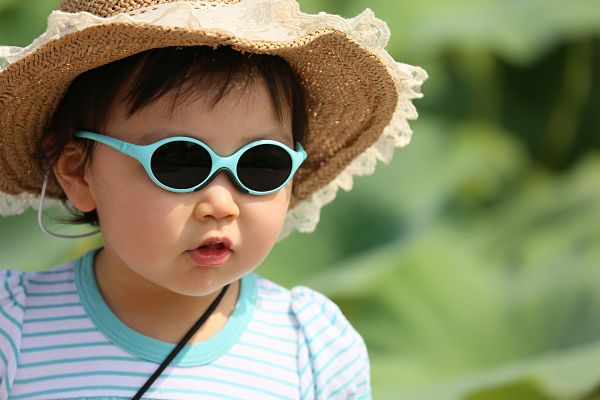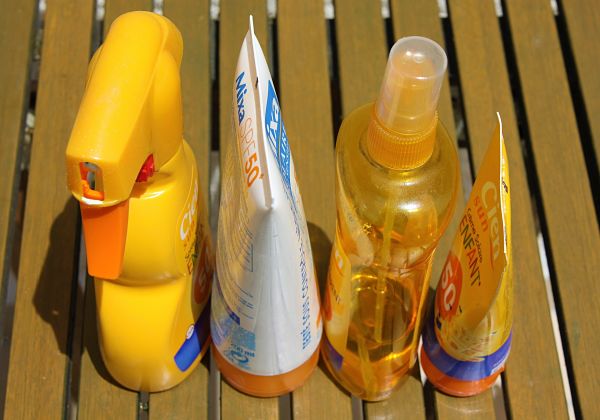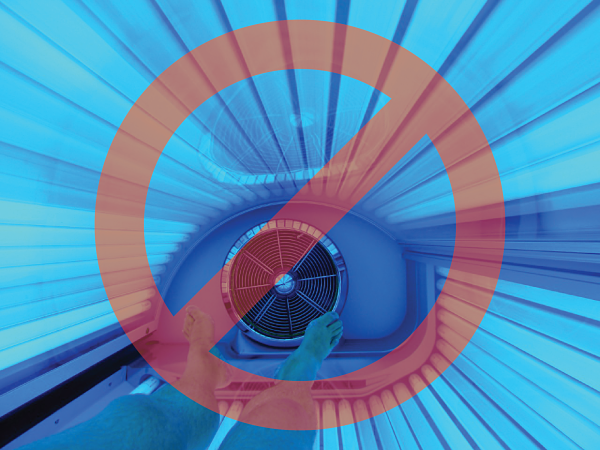|
How to Be Sun-Safe

Skin cancer is the most common form of cancer in the
United States. The two most common types of skin cancer – basal cell and squamous
cell carcinomas – are highly curable. However, melanoma, the third most common skin
cancer, is more dangerous. Here are some tips from the Centers for Disease Control & Prevention on reducing your chances of
being diagnosed with any type of skin
cancer.
Seek shade, especially between 10 a.m. and 4 p.m. You can
reduce your risk of skin damage and skin cancer by seeking shade under an
umbrella, tree, or other shelter before you physically feel a need for relief
from the sun.
Wear clothing to protect exposed skin. Loose-fitting, long-sleeved shirts and long
pants made from tightly woven fabric offer the best protection from the sun's
UV rays. Keep in mind that a typical T-shirt has an SPF rating lower than 15,
so use other types of protection as well.
 Wear a hat. For
the best protection, wear a hat with a brim all the way around that shades your
face, ears, and the back of your neck. A tightly woven fabric, such as canvas,
works best to protect your skin from UV rays. If you are wearing a ball cap,
don't forget to protect the back of your neck and tops of your ears with
clothing and/or sunscreen. Wear a hat. For
the best protection, wear a hat with a brim all the way around that shades your
face, ears, and the back of your neck. A tightly woven fabric, such as canvas,
works best to protect your skin from UV rays. If you are wearing a ball cap,
don't forget to protect the back of your neck and tops of your ears with
clothing and/or sunscreen.
Wear sunglasses. They protect your eyes from UV
rays and reduce the risk of cataracts while also protecting the tender skin
around your eyes from sun exposure.
Use sunscreen. Choose sunscreen with sun protective factor
(SPF) 15 or higher, and both UVA and UVB protection. The sun's UV
rays can damage your skin in as little as 15 minutes. Put on sunscreen before you go outside, even on slightly
cloudy or cool days. Apply a thick layer (rub it in until it's gone) on all
parts of exposed skin and get help for hard-to-reach places like your back.
Sunscreen does wear off, so all sunscreens (even the "waterproof"
ones) need to be reapplied after swimming, sweating or being outside for more
than two hours.
 Avoid indoor tanning. Using
a tanning bed, booth, or sunlamp to get tan has been linked to an increased
risk of skin cancers including melanoma and cancers of the eye. A recent study found that using a tanning bed, any type and for any length of time,
increases a person's risk of melanoma by 74%. Avoid indoor tanning. Using
a tanning bed, booth, or sunlamp to get tan has been linked to an increased
risk of skin cancers including melanoma and cancers of the eye. A recent study found that using a tanning bed, any type and for any length of time,
increases a person's risk of melanoma by 74%.
If you have questions or want to know more about the ways you can protect your children from skin cancer, please contact one of our Certified Health Education Specialists – Sandy Prince, MS,
CHES, Casey Shelor, MS, CHES, CTTS, or Abbie Sudduth, CHES – at 479-361-5847.
|
|
|